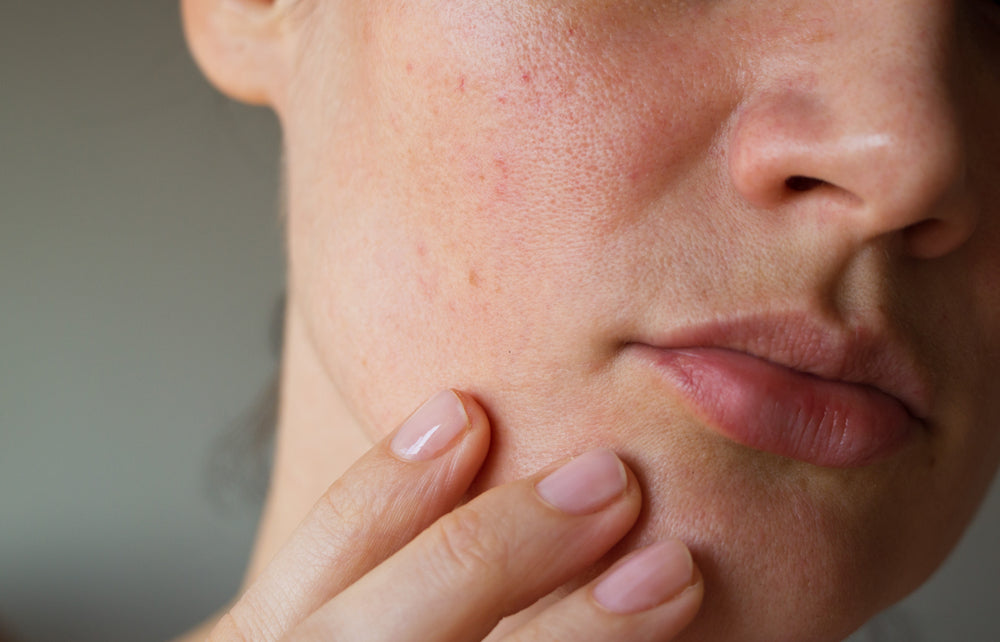What Parts of Your Body Should You Exfoliate for Radiance?
When it comes to achieving that coveted glowing skin, the question arises: what parts of your body should you exfoliate? For beauticians and skin enthusiasts alike, understanding the areas that benefit most from exfoliation is crucial. Not only does exfoliation remove dead skin cells, but it revitalizes your skin, allowing for better absorption of skincare products. This article delves into the intricacies of exfoliation, tailored for beauticians who seek to enhance their knowledge and provide top-notch care to their clients.
Before diving into the specifics, it's important to note that not every part of your body requires the same level of exfoliation. While some areas can withstand vigorous scrubbing, others may need a gentler approach. This article will guide you through the various parts of your body you should focus on and how to do it safely and effectively.

The Key Areas of Exfoliation
Knowing what parts of your body should you exfoliate is just the beginning. Here are the key areas that benefit from regular exfoliation:
1. Face: The Canvas of Your Beauty
Your face is often the first impression you make. Regular exfoliation is vital for keeping it smooth and radiant. Using facial scrubs or chemical exfoliants helps to reduce fine lines, smooth texture, and clear clogged pores. Its recommended to exfoliate your face 1-2 times a week, depending on your skin type. Those with sensitive skin should limit this to once every two weeks to avoid irritation.
2. Lips: Soft and Kissable
The lips can also benefit from exfoliation. A gentle scrub can remove dead skin cells, making them appear plump and healthy. Consider using a sugar or honey scrub for this delicate area. Regular lip exfoliation can enhance the effectiveness of lip treatments and lipsticks.
3. Neck and Decolletage: Often Overlooked
These areas are often neglected in skincare routines. Exfoliating the neck and dcolletage can improve skin texture and appearance. This area is delicate, so a gentle exfoliating cream or cloth is ideal to avoid irritation.
4. Hands and Feet: The Unsung Heroes
Our hands and feet endure a lot of wear and tear. Regular exfoliation here helps to soothe rough patches and promote softness. Look for specialized scrubs designed for the body, and dont forget to follow up with a rich moisturizer.
5. Body: Smooth Skin All Over
Exfoliating the body can help remove dead skin cells and prevent ingrown hairs, especially in areas like the legs and arms. Body scrubs or mitts can be used to provide a thorough cleanse. Focus on areas prone to dryness, like the elbows and knees.
The Different Exfoliation Methods
The next question is how to achieve the best results in exfoliation. There are several methods, each tailored to different skin types and areas:
1. Physical Exfoliation
This method uses scrubs, brushes, or pads to manually slough off dead skin cells. This approach can be beneficial for those with tougher skin types and allows for greater control over the intensity of exfoliation.
2. Chemical Exfoliation
Chemical exfoliants contain acids, such as alpha hydroxy acids (AHAs) and beta hydroxy acids (BHAs). These work by dissolving the bonds that hold dead skin cells together, making them an excellent choice for those with sensitive or acne-prone skin.
3. Enzymatic Exfoliation
Using enzymes from fruits like papaya or pineapple can efficiently exfoliate the skin without scrubbing. Enzymatic exfoliation is very gentle and suitable for all skin types.
Exfoliation Frequency: How Often Should You Exfoliate?
Your exfoliation routine depends on your skin type and the methods you are using. However, a general guideline is as follows:
- Normal Skin: 1-2 times a week
- Oily Skin: 2-3 times a week
- Dry/Sensitive Skin: 1 time a week
- Combination Skin: Tailored approach alternating between different methods
Prepping and Caring for Your Skin
Preparing your skin before exfoliation is crucial. Here are some key tips:
- Always cleanse your skin before exfoliating to remove any makeup or dirt.
- Hydrate your skin post-exfoliation to promote skin barrier repair.
- Apply sunscreen daily, as exfoliation can make your skin more sensitive to UV rays.

Frequently Asked Questions
1. Can I exfoliate every day?
Exfoliating daily is not recommended for most skin types, as it can lead to irritation and damage. However, some products are formulated for daily use, but it is essential to choose carefully based on your skin type.
2. What should I do if my skin becomes irritated after exfoliation?
If irritation occurs, stop exfoliating and switch to a gentle moisturizer. Incorporate soothing ingredients like aloe vera or chamomile to calm the skin.
3. Are there areas I should avoid exfoliating?
Yes, areas such as the eye area and broken skin should not be exfoliated as they are more delicate or compromised.
In conclusion, knowing what parts of your body should you exfoliate and the correct techniques can significantly improve your skincare routine and your clients' treatments. For more detailed guidance, you can refer to this article.

